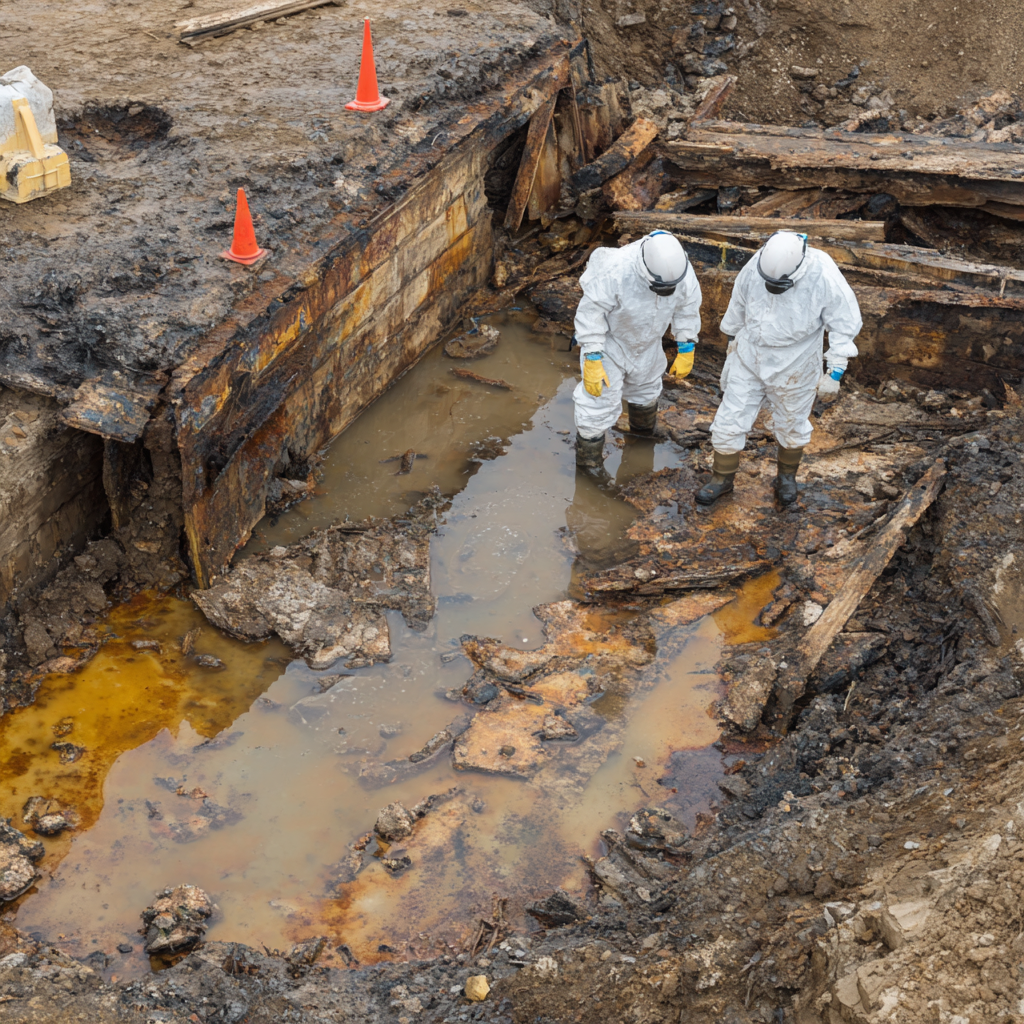Contaminated groundwater - Understanding chlorinated solvent risks
A practical guide for Developers and Environmental Consultants
Chlorinated solvents are among the most persistent and challenging contaminants encountered in brownfield redevelopment and remediation projects.
Often invisible to the eye and odourless in groundwater, these substances can spread rapidly, resist natural breakdown, and trigger strict regulatory scrutiny if not properly addressed.
This article explains the nature of chlorinated solvent contamination, where it comes from, and how Churngold helps manage the risks on complex development sites.
What are Chlorinated Solvents?
Chlorinated solvents are man-made chemicals that were widely used in industry from the 1950s onwards, particularly for:
Degreasing metal parts
Dry cleaning operations
Chemical manufacturing
Electronics production
Common compounds include:
Trichloroethene (TCE)
Tetrachloroethene (PCE or ‘perc’)
Dichloroethene (DCE)
Vinyl chloride (a breakdown product of TCE and PCE)
They are classified as volatile organic compounds (VOCs) and are considered hazardous due to their toxicity, carcinogenic properties, and potential to migrate far beyond their source.
Why they’re a problem on development sites
Chlorinated solvents pose a significant threat to redevelopment projects, particularly where groundwater is present. Key risks include:
Groundwater plume migration, which can affect neighbouring land and controlled waters
Vapour intrusion into buildings through sub-slab entry
Regulatory delays from the Environment Agency or local authorities
Remediation complexity, particularly in mixed-use or constrained sites
High costs of investigation, treatment, and long-term monitoring
Because chlorinated solvents are denser than water (DNAPLs), they tend to sink through the subsurface and accumulate in deep, low-permeability zones — making them difficult to remove and unpredictable to track.
How Churngold manages Chlorinated Solvent risk
We’ve worked on numerous sites affected by chlorinated solvents, from former manufacturing facilities to logistics yards and dry-cleaning depots. Our approach focuses on clarity, compliance, and containment.
1. Site history and preliminary risk screening
Desktop study to identify past industrial uses and potential solvent storage
Review of borehole logs, groundwater data, and existing reports
Planning constraints or EA requirements flagged early
2. Targeted investigation and monitoring
Intrusive ground investigation using boreholes and multi-level sampling
Groundwater and soil vapour sampling
Laboratory analysis to characterise contaminants and identify breakdown products
3. Conceptual Site Model (CSM) and Risk Assessment
Definition of source–pathway–receptor linkages
Tiered risk assessment based on current guidance
Identification of mitigation and remediation options
4. Remediation strategy and implementation
Depending on site conditions, we may implement:
In-situ treatment (e.g. chemical oxidation, bioremediation)
Pump and treat systems
Soil vapour extraction
Physical containment (cut-off walls, impermeable barriers)
All works are planned around programme and budget constraints, ensuring minimal disruption to development.
5. Validation and regulatory sign-off
Post-treatment monitoring
Engagement with EA and local planning authorities
Support with verification reporting and discharge of planning conditions
When to involve Churngold
We recommend speaking with our team if:
Your site has a history of manufacturing or solvent use
You’re acquiring or redeveloping a dry-cleaning or vehicle maintenance site
Groundwater contamination is suspected or confirmed
You’re preparing a remediation strategy or need to respond to EA feedback
You require a contractor with both technical expertise and practical delivery
We’ll help you identify the risk early, build a robust remediation plan, and avoid delays to your project.
Need a trusted remediation partner?
Chlorinated solvent contamination can quickly become a serious constraint on your development. Churngold brings the technical understanding and practical capability to manage it from start to finish.
Get in touch with our remediation team to discuss your site or request a review of your investigation data.





